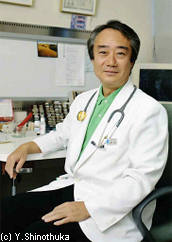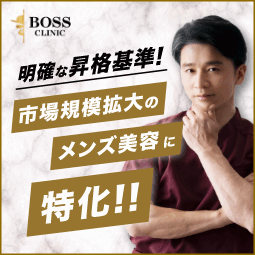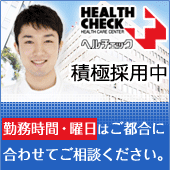
神津 仁 院長
1999年 世田谷区医師会副会長就任
2000年 世田谷区医師会内科医会会長就任
2003年 日本臨床内科医会理事就任
2004年 日本医師会代議員就任
2006年 NPO法人全国在宅医療推進協会理事長就任
2009年 昭和大学客員教授就任
1950年 長野県生まれ、幼少より世田谷区在住。
1977年 日本大学医学部卒(学生時代はヨット部主将、
運動部主将会議議長、学生会会長)
第一内科入局後、1980年神経学教室へ。
医局長・病棟医長・教育医長を長年勤める。
1988年 米国留学(ハーネマン大学:フェロー、ルイジアナ州立大学:インストラクター)
1991年 特定医療法人 佐々木病院内科部長就任。
1993年 神津内科クリニック開業。
「再び韓国へ、親孝行と思って車イスで両親を連れて旅する -Ⅱ-」
「私の家には部屋が5つもあるから、韓国に寄ったら必ず泊って下さいね」と、口癖のように張先生がいう。高級マンションに住んでいて、友人を泊めるのがhospitalityと考えているようだ。我々日本人からすると、プライベートなご自宅に夫婦で泊めてもらうのは恐縮であるし、こちらもかえって気を遣う。特に、トイレが近くなった最近では、夜中に何回か起きないといけないから、近くにbathroomがないと皆さんを起こしてしまうのではないかと気がかりだ。それに昔から鼾が大きいから、これも恐縮である。妻も昔は鼾などかくことはなかったのだが、最近は大鼾で寝ているからこちらも迷惑だと恐縮してしまう。しかし、どうしても家に泊まりなさい、と強く勧めてくれるから、いつかはお邪魔しないといけないと思う。異文化交流も大変なのだ。
張先生は眼科の教授である。昔々、私がアメリカはニューオリンズで研究生活をしていた頃、一緒に実験を手伝った仲間だった。私はDr. Parryというニュージーランド出身の末梢神経研究が専門の教授の下で研究主任をしていた。ストレプトゾトシンという薬剤をラットに注射すると、膵臓のインスリン産生細胞が障害されて糖尿病を発症する。その結果糖尿病の合併症である糖尿病性神経症や白内障を生じる。私は糖尿病によって起こった末梢神経障害が、神経を栄養している微小血管が原因で生じ、微小血管を広げる薬剤を用いることによって末梢神経障害を遅らせることが出来る、という実験をしていた。PubMedにはまだその文献がいくつか収載されている。
Acute changes in blood glucose affect resistance to ischemic nerve conduction failure. |
Parry GJ, Kohzu H.
LSU School of Medicine, Department of Neurology, New Orleans 70112.
We studied resistance to ischemic nerve conduction failure (RINCF) following rapid alterations of blood glucose in normal and diabetic rats. We measured RINCF hourly for 4 hours in normal and diabetic rats. We then made normal rats hyperglycemic and diabetics euglycemic. In normal rats, we measured RINCF sequentially for 4 hours immediately after glucose injection and once after 1, 2, 3, or 4 hours of hyperglycemia. In diabetics, we measured RINCF sequentially for 4 hours after insulin injection. In normal rats, in sequential measurements, RINCF progressively fell but glucose injection prevented this fall. Hyperglycemia without preceding ischemia increased RINCF. In diabetic rats, sequential measurements also produced a decline in RINCF, accentuated with insulin injection. The results suggest that both glucose and insulin are important in determining the response of peripheral nerve to ischemia. They also underscore the importance of knowing the blood glucose and time of most recent insulin injection when measuring RINCF.
Endoneurial blood supply to peripheral nerves is not uniform. |
Kozu H, Tamura E, Parry GJ.
Louisiana State University Medical Center, New Orleans 70112.
Peripheral nerves are not uniformly susceptible to the effects of ischemia in human and experimental ischemic neuropathies. Since endoneurial blood flow is directly proportional to the number of endoneurial capillaries, we studied endoneurial capillary density at multiple levels of the peripheral nerves of normal rats. Capillary density was lowest in the sciatic and proximal tibial nerves and significantly higher in dorsal and ventral roots and distal tibial and plantar nerves. Endoneurial capillary density corresponds to the hierarchy of susceptibility to ischemic nerve damage in human and experimental ischemic neuropathies. These findings suggest that susceptibility of peripheral nerves to ischemia is determined, at least in part, by the density of endoneurial capillaries.
Piroxicam may reduce the rate of progression of experimental diabetic neuropathy.
Parry GJ, Kozu H.
Department of Neurology, I.S.U. Medical Center, New Orleans 70112.
We studied the effect of piroxicam, a long acting inhibitor of platelet aggregation, on the evolution of neuropathy in diabetic rats. We treated half of the rats with piroxicam and serially studied sensory and motor nerve conduction during 20 weeks of diabetes. The sensory nerve action potential amplitude was the same in treated and untreated rats before diabetes, and declined steadily as duration of diabetes increased. In treated rats, the amplitude fell more slowly and by 16 weeks and thereafter was significantly higher than in untreated rats. Sensory conduction velocity and motor nerve conduction studies were not affected by piroxicam treatment. The results suggest that piroxicam may slow the rate of progression of neuropathy in diabetic rats, probably by inhibiting platelet aggregation.
The effect of aminoguanidine on the blood-retinal barrier in streptozocin-induced diabetic rats.
Cho HK, Kozu H, Peyman GA, Parry GJ, Khoobehi B.
LSU Eye Center, Louisiana State University Medical Center School of Medicine, New Orleans 70112.
The effect of aminoguanidine hydrochloride (AG) on the blood-retinal barrier was studied in rats with streptozocin-induced diabetes. Half of the rats were given AG (100 mg/kg/day) while the remainder received no treatment. Vitreous fluorophotometry was performed on all rats before STZ injection and 2 weeks after induction of diabetes mellitus. Two weeks after STZ injection the mean 60-minute vitreous fluorescein concentration following dye injection had increased more in the nontreated group than in the AG-treated group, suggesting that AG may have some beneficial effect on the breakdown of the blood-retinal barrier.
この最後の文献が張先生と研究した文献である。眼科の医学雑誌(Ophthalmic Surg. 1991 Jan;22(1):44-7.)に載ったのはこれが最初で最後だと思う。私は特に期限を決めて留学していたわけではないのだが、張先生は韓国の国費留学で、6ヶ月という短期間だった。その間に結果を出さなければ、帰国しての大学教授の職はない、といわれていたらしく、眼の色が違っていた。
LSUの大学内では、糖尿病研究を介して神経内科と眼科とはうまく連携が取れていて、眼科の教授とDr. Parryとは懇意の仲だったから、共同研究を申し出たようだ。
「Toshi、悪いんだけれど、2ヶ月くらい、韓国から留学してきた眼科の先生に実験のやり方を教えてあげてくれないかな」とDr. Parryが頼んできた。彼がボスだから、頼みは命令に近い。最初の実験が一段落していたところだったので、もちろん承諾した。今までは神経内科の自分の研究室に通っていたのが、今度は「Eye Center」というLions clubが寄付した大きな眼科専門病院の研究室に通うことになった。
アメリカは人種のるつぼというが、我々神経内科もニュージーランド、オーストラリア、日本、インドの混合部隊だった。眼科の研究者もアラブ各国から韓国とかなりの混成部隊だった。
どうも眼科の受け入れは短期間が多いらしく、お互いが過密スケジュールで動いていた。実験室がいくつかあるのだが、時間の取り合いで、「私が先だ」「いや私だ」と言い合いになるくらいだ。こうした場面では、国情や国民性が出る。アラブの研究者はいちおう主張はするが、まあ鷹揚というか、金持ち喧嘩せず、みたいなところが見て取れた。しかし、張先生は果敢に彼の主張を貫いて、しかも曲げなかった。「私には時間がないんだ!」というのが彼の主張だ。この留学に命がけなんだ、という覇気を感じるから、アラブの医師たちもタジタジだ。そして、張先生がその時間を獲得すると、暗室の中で顕微鏡を見ながら私に「本当にやつらは図々しいんだから」というのが常だった。
その結果が先ほどの論文になり、あと二つくらいの論文を仕上げて張先生はニューオリンズを旅立った。私はその後日本に帰り、開業してから何度かソウルに行って、一度張先生のお宅にお邪魔した。二回目に会ったのは、彼には連絡をしていなかったが、ホテルのロビーで張先生が親戚(日本在住)の医師の見送りに来ていた時だった。この時はお互いに先を急いでいたので詳しい話はできなかった。
今回は、両親のお供で来たので時間はたっぷりあったから、彼の病院に行ってみた。今までは土日しか行けなかったので、お互いが休みのスケジュールモードで、うまく合わせられなかったが、夏休みを少し早く取ったので先方の休みとは重ならず、韓国は平日なので彼の仕事場に行くのに丁度よいと思った。ホテルからタクシーに乗って20分ばかり走ると「中央大学付属病院」の前に止まった。
 |
これが、日本の大学病院より近代的で素晴らしい建物だった。あいにくの雨だったから、日本の国立病院なら暗い雰囲気だと思うが、総ガラス張りのロビーは明るく、開放的なものだった。中へ入るとすぐ左に自動支払機があり、医療相談をするスタッフは受付カウンターからもっと患者側に近い場所にテーブルを置いて、ホテルのコンシェルジェのように笑顔で応対をしている。日本のロビーより、ずっと患者に対するホスピタリティが上のように感じた。
 |
 |
張先生の眼科外来は二階にあって、この待合も清潔できれいだ。
 |
もちろん、留学の甲斐あって主任教授だ。外来のボードのトップに彼の写真があった。彼の診察室に入ってみると、デスクの上には4台のPC端末が置いてあった。一つは電子カルテ、一つは画像診断専用端末、一つはオーダーシステムなど事務的なものとそれぞれが違った役割をするらしく、これらの画面を忙しく行き来するのは疲れる、と本音を漏らしていた。日本では、どうしても一つのPCに多くの役割を持たせようとするので、ページを読み込むのが大変だ。技術的には低くとも、こうして韓国の病院のように端末の種類を増やして簡素化する、というのも一つの方法だろうと思った。
 |
韓国は、今どんどん先進国に近づいている。しかも、韓国文化を大切にして。
我々のお付き合いは、今までの家内や子供たちから、わだかまりを持っていた父親や母親の世代に広がった。残念ながら、張先生のお父さんは老人ホームに入っているとのこと。
私が「開業医は医師の中での熟成した人たちがなるもので、大阪大学の学長先生が『医師の人生で一つだけ後悔しているものがある。それは、開業医になれなかったことだ』という言葉を残したほどなのです」と話すと、「私は、もうすぐ定年だけれど、手術が好きだし、大学の教員でいることも好きだから、これで満足です」と張先生は答えた。それも人生だ。
 |

